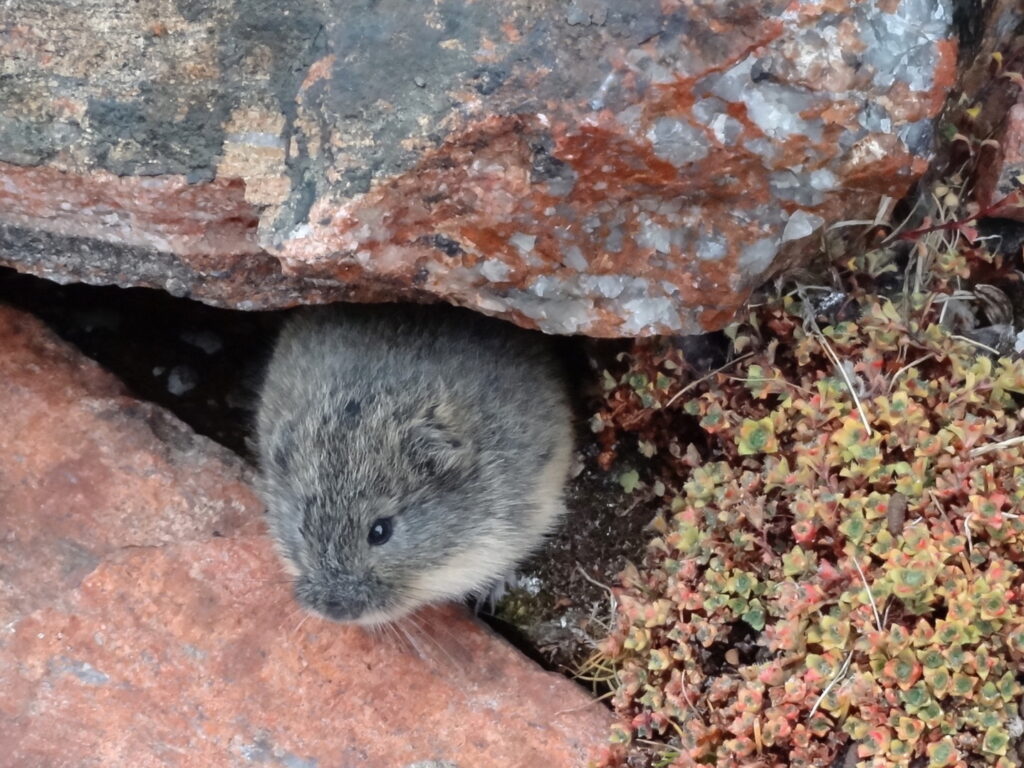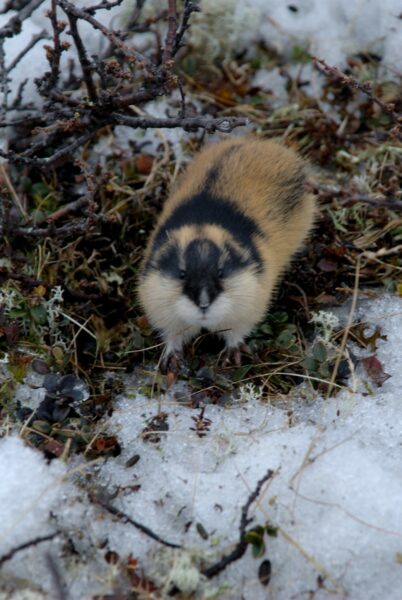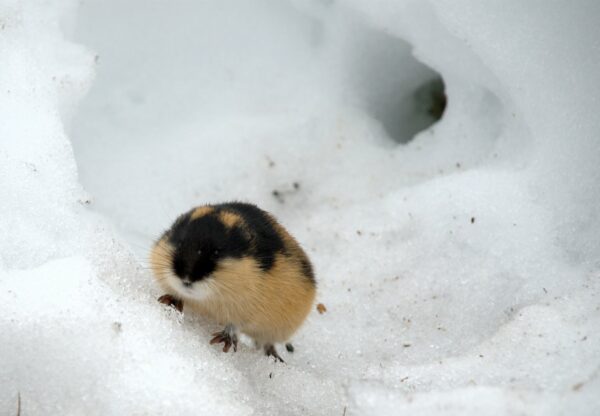
The brown (or Canadian) lemming is one of a number of species that are vital for snowy owls and other Arctic predators. (Robert McLeod/Wikipedia)

Whether population cycles in species like this Norway lemming are slowing or collapsing is critical to the long-term welfare of snowy owls. A new study has some answers. (kgleditsch CC BY-SA 2.0 DEED)
It’s impossible to overstate the importance of small rodents, especially lemmings, to snowy owls. Although snowies eat a remarkable variety of prey during the winter, from voles, muskrats and rabbits to waterbirds like ducks, gulls and occasionally even birds as large as snow geese and red-throated loons, during the summer breeding season in the Arctic their nesting fortunes are largely tied to rodents, particularly lemmings. In a nutshell, snowy owls rarely nest successfully — or may not even try nesting at all — if there isn’t a population peak among these rodents, which like many small mammals undergo periodic boom-and-bust cycles roughly every four years. Many other Arctic predators, from foxes to rough-legged hawks to weasels, also depend on lemmings, which are foundational to the food chain. Big snowy owl irruptions in winter usually follow a lemming boom and a productive owl nesting season.
That’s why reports in recent years from across the global Arctic and subarctic that the timing of such cycles has been changing, or that the lemming cycles have collapsed altogether, has been very worrying. That news has come as some researchers have argued that other population cycles, ranging from those in several kinds of boreal-forest grouse to snowshoe hares to outbreaks of a particular defoliating caterpillar in Switzerland for which records go back to the Middle Ages, have been slowing or stopping altogether, possibly due to the effects of climate change.
In the case of lemmings, the concern is what effect changing winter weather has on the animals’ ability to breed. Lemming populations peak in summer only if the rodents can begin to breed successfully through the winter, shielded from the Arctic cold beneath an insulating layer of snow. (This world beneath the drifts is known as the subnivean environment, a surprisingly benign place where a tubby rodent can easily tunnel, feed on tundra vegetation, build tidy grass nests and start producing lots and lots of babies in midwinter.)
If early winter is unusually warm, though, that thick snowpack may not form, or it may thaw and refreeze; midwinter rain-on-snow events may also bring water to ground level that then freezes, sealing off food. The concern is that slowing or collapsing lemming cycles, which have been reported from Fennoscandia, parts of Greenland and Russia, may be a reflection of these changes. And if lemming cycles slow or vanish, that would not bode well for Arctic food webs, including top predators like snowy owls.
So a newly published analysis of global lemming cycles, coauthored by 24 scientists from nine countries encompassing the circumpolar Arctic (many of whom are colleagues of ours in the International Snowy Owl Working Group), caught our attention last week. Appearing in the journal Proceedings of the Royal Society B and titled, “Taking the Beat of the Arctic: Are Lemming Population Cycles Changing Due to Winter Climate?,” the paper looked at the results of almost 50 lemming studies across the Arctic region, then winnowed those down to 20 (in Canada, Russia, Greenland and Fennoscandia) with the highest quality data; these individual studies ranged in length from 19 to 91 years.

A Norway lemming ventures from its snow tunnel. (kgleditsch CC BY-SA 2.0 DEED)
The authors then performed a series of complex analyses to test two key hypotheses: Whether early winter warmth and late snow onset may be affecting lemming cycles, and whether shorter winters may be reducing lemming population growth and densities the following summer. More generally, their overall analysis might shed light on whether lemming cycles have been declining more broadly than anyone realized.
Although the researchers found no evidence that shorter winters are impacting global lemming cycles, they did find a negative effect on lemming cycles from early-winter warmth. Perhaps most intriguingly, the data also showed periodic fading and re-emergence of lemming cycles, cycles within cycles that did not appear to be correlated with winter weather effects. Nor did they seem to be getting worse with time.
“[N]on-cyclic periods were observed in almost all time series, strongly suggesting that cyclicity is a dynamic process in lemmings and that alternating periods of cyclic and non-cyclic fluctuations is common throughout their range … Moreover, these non-cyclic periods did not occur synchronously and were not more prevalent in recent years. Therefore, our data do not provide evidence that the fading or collapse of lemming cycles recently reported at some sites is at present a general phenomenon across the whole Arctic tundra despite repeated suggestions to that effect,” they wrote.
One of the lead authors, our colleague Gilles Gauthier at Laval University in Québec, has been studying lemmings on Bylot Island in the Canadian Arctic for decades. In a 2013 paper, Gilles and two colleagues found that, from 1994-2011 0n Bylot, the average snow depth actually increased, while the onset of snowpack came earlier in the season. That’s likely a counter-intuitive product of climate change, which is causing parts of the eastern and central Canadian Arctic to get colder and snowier at certain times of the year, which is probably good for lemmings (and perhaps snowy owls). But that’s also a local effect not occurring uniformly across the Arctic.
Still, this most recent paper is obviously good news, though its authors did caution that continued warming in early winter, which is expected in many areas with climate change (including, eventually, perhaps the Canadian Arctic as well), could alter that positive assessment because of the now-documented effects of late and wet snow conditions on lemmings. So while the situation may not be as dire as some once thought, there’s no room for complacency.


4 Comments on “An Important New Study on Lemming Cycles”
Thank you Scott for all your updates. I always enjoy reading them and learning from you. Another winter for me without seeing snowies, but I look forward to the future.
Fascinating article filled with hope! I’m curious about how quickly lemmings might adjust through an evolutionary process.
Woah….. I wasn’t ready for a tricolor, velvet fur,cuter than heck- very first view of a lemming.
Who knew?
Not every lemming species is as flashy as Norway lemming, but yeah, that’s quite a snazzy little rodent.